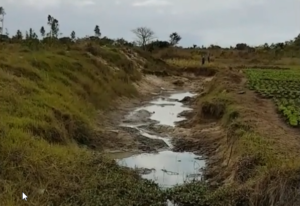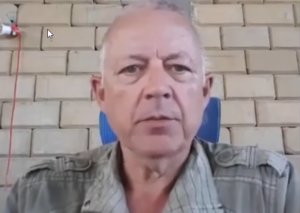Make Your Experiences Count. They Can Change the World.
LET’S BRING ALL OF OUR KNOWLEDGE AND EXPERIENCES TOGETHER.
TOGETHER WE KNOW MORE. TOGETHER WE ACHIEVE MORE. TOGETHER WE DO BETTER.
LET’S BRING ALL OF OUR KNOWLEDGE AND EXPERIENCES TOGETHER.
TOGETHER WE KNOW MORE. TOGETHER WE ACHIEVE MORE. TOGETHER WE DO BETTER.
Published: January 20, 2020
Any sustainable farming operation will have to consider that soils are a crucial and diminishing resource in agricultural production. Soils take a long time to form (thousands of years) and can be destroyed within just a few years. Fertile land is essential for sustaining agriculture. The productivity of land has, however, decreased due to more intensive use required by a fast-growing population.



Agriculture is suffering from serious land degradation caused by unsustainable practices such as:
To improve deteriorated soils is difficult. Maintaining soils and protecting them from erosion, salination, contamination and cementation is crucial, soil fertility requires careful management.
I have been working as a TA for Horizont3000 at Young Africa Agritech in Dondo, Sofala (Mozambique) for the past 6 months. Young Africa operates a farm of 200 hectares plus a school offering practical agricultural training.
The soil found at the Agritech Centre is a so called Gleysol (World Reference Base (ISSS/ISRIC/FAO 1998). Gleysols are wetland soils, typically saturated with groundwater. They occur worldwide and in all climate zones in low landscape areas with very shallow groundwater (around 50-100 cm even during most of the dry season, fields are often flooded completely in the rainy season). Wetness is their limiting factor; thus, Gleysols are often left idle or are used for grazing and rice production. If properly drained and managed they can produce many other crops, especially maize and vegetables.

The upper soil layer of the better fields here at Agritech Dondo is quite fertile, dark brown with high organic matter content. This top layer is however not very deep, in most fields it is only about 35-50 cm or so in depth, in a few spots it goes down to a maximum of about 1meter. Below that portion you will find the usually flooded part of the soil, greyish in colour due to anaerobic conditions, with characteristic orange coloured iron aggregates (so called iron mottles), a result of frequent chemical reduction and oxidation of the iron due to long periods of flooding and occasional drying. Drainage of such soils is often a problem in flat and low-lying areas like Dondo. Raised beds or ridges help but open drains often fail to adequately remove water during the rainy season and cannot drain at all in times of flooding. Even though our topsoil drains well, the lower soil strata are usually under water most of the year due to the high water-table thus, if heavy rains start the drains are themselves flooded up to the surface water level.
The YA Agritech farm is situated not far from the sea and measuring elevation, I found most of the farm to be only around 13 m above sea level. The location indicates a marine influence with salty sub-layers in the soil which can also affect the quality of bore hole water as the dissolved salts can be a limiting factor in the use of such water for irrigation. It would require a considerable amount of percolation from rain or irrigation and corresponding drainage to allow salt to wash out of the soil by rainwater.
Deep ploughing and digging of irrigation pits and drains has brought up a lot of unfertile subsoil over the years. Many fields have dropped in fertility and reduced yields are common due to this practice. The following video shows the problem: